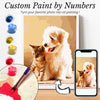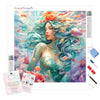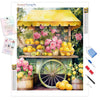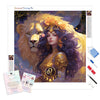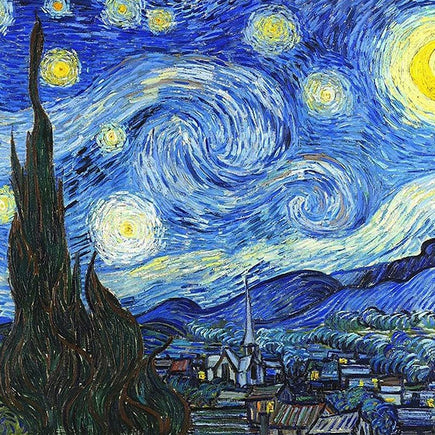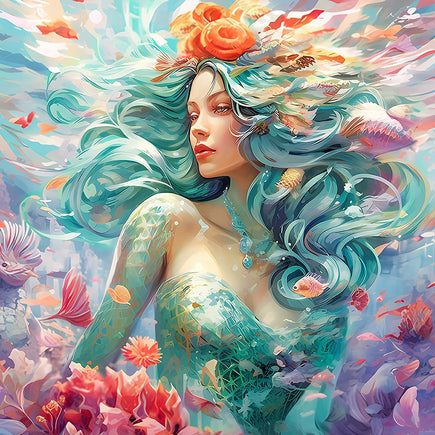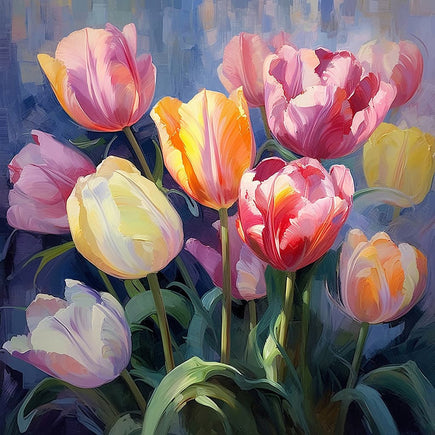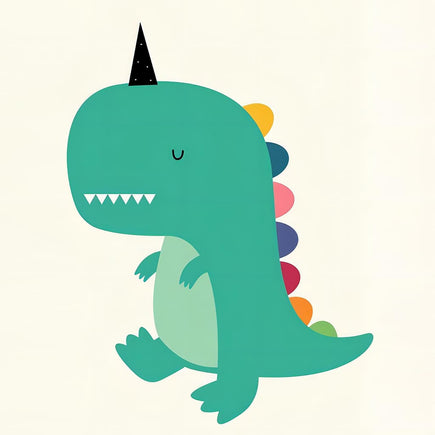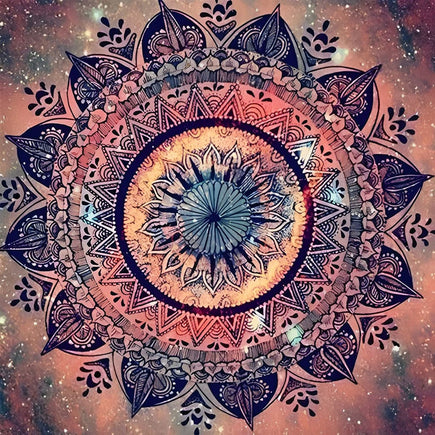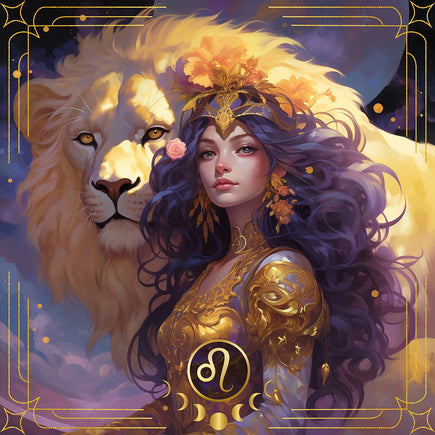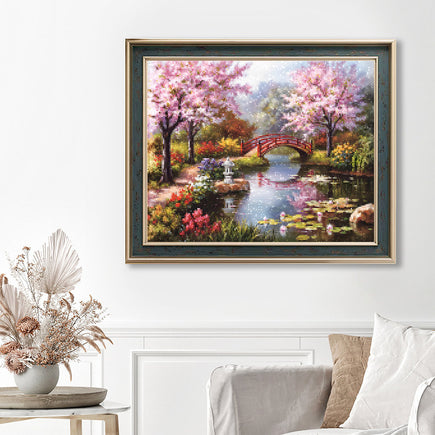How Can I Protect My Eyes While Diamond Painting
Diamond painting is truly one of the most rewarding and relaxing hobbies available. It’s the perfect escape, allowing you to use focus and creativity, and see a gorgeous piece of art come to life. But after a long, engaging session, you’ve likely become aware of the after effects: tired, dry, or strained eyes, and perhaps a headache.
The combination of the tiny size of the drills and continuous focus can strain your eyes when diamond painting. But you don’t have to choose between doing your hobby and your sight. This guide will explore a few simple actions to protect your sight and continue to enjoy your favorite pastime for years to come.

Why Your Eyes Get Tired
The meticulous and intricate work of diamond painting is great for creating focus, but any prolonged focus on very small things can lead to eye fatigue. This isn't unique to diamond painting; it happens with reading, sewing, or screen time.
Worked Eye Muscles: As you focus on the tiny drills for so long, the little muscles in your eyes have been busy adjusting to keep the image sharp. This is called accommodation and like any muscle in your body, they will get tired from working without a break.
Blinking: While we occupy ourselves with captivating task, our natural blink rate can become significantly reduced. Blinking is one of the primary means of lubricating the eyes. When we don't blink enough, eyes may feel dry, scratchy, and irritated which can cause discomfort.
Contrast: If your workspace has poor or inconsistent lighting, your eyes have to work harder to adjust to the brightness of the canvas versus the surrounding dimness, which quickly accelerates fatigue.
Quick Fixes During Your Session (Immediate Relief)
The time to address your eyes is not once they start hurting. Integrate these habits into your practice for immediate relief:
20-20-20 Rule (The Golden Rule): This is the best advice for eye strain. Every 20 minutes, you should look away from your canvas and look at something 20 feet away "for 20 seconds." This simple action begins to relax the focusing muscles within the eyes, resetting them before they become overly fatigued. Consider setting a quiet timer on your phone.
Conscious Blinking and Hydration: Make the intentional effort to blink fully and often, especially when you take the opportunity to look up. Make sure you are drinking water with frequency. Overall hydration of our body directly affects the moisture level in our eyes.
Artificial Tears: If your eyes are dry or scratchy on a regular basis, keep lubricating eye drops (artificial tears) on hand. A drop or two will quickly re-moisten the eyes, wash out irritants, and provide relief.

Optimize Your Workspace Lighting (The Most Critical Factor)
Adequate lighting is the best tool to minimize eye strain. Investing in a good setup will provide comfort.
The Benefits of a Light Pad: A light pad is important for diamond painting. It provides consistent, even backlighting that brightens the symbols on your canvas, minimizes shadowing and enhances visibility of the adhesive. Ensure you choose a pad with adjustable brightness.
Layer Your Light: It is not enough to only rely on a light pad or a dim ceiling light. You want layered lighting: your overhead ambient light (room light) and a flexible task lamp (desk lamp with an adjustable neck). This helps reduce harsh contrast between your bright canvas and the dark surrounding area.
Adjust for Glare and Shadows: Position your main light (task lamp) to the side of your non-dominant hand. This prevents your hand or arm from casting shadows onto the exact spot you are working on. Do not work near uncovered windows during the day because the shiny drills will produce intense reflective glare.
Ergonomics and Vision Tools (Long-Term Protection)
For those marathon crafting sessions, the right setup and tools can provide the long-term support your eyes need.
Magnification Tools: If you find yourself leaning in to see the symbols, then you do have a need for magnification. Something as simple as reading glasses that you can get over the counter can help greatly. For serious craft people, you may want to look for a magnifying lamp or a floor stand that you can allows you to bring the lighting and magnification to your working space without having to bend over.
Maintain the Proper Distance: You want to try and keep a healthy, comfortable distance away from your eyes and the canvas; ideally somewhere between 12 inches and 18 inches away. Using a book stand or an easel for propping up the canvas at an angle is another tool you can use to help keep working at a more comfortable viewing distance and to keep neck tension from forming.
Consider Anti-Fatigue Glasses: Glasses with a blue light blocking filter may be helpful to some users by reducing the eye fatigue associated with prolonged exposure to the LED light of the light pad. If you are still experiencing eye fatigue, consider seeing an optometrist because they may suggest computer glasses designed for your precise working distance for diamond painting.

Keep the Sparkle Going
Protecting your vision is the single most important thing you can do to ensure you enjoy diamond painting for years to come. The problem—fatigued eye muscles and dryness—is completely manageable with simple, proactive steps. Don't wait for the strain to start. Prioritize your eyes now so your diamond painting journey can be long, comfortable and, most importantly, sparkling. Set that timer and get back to your canvas!


